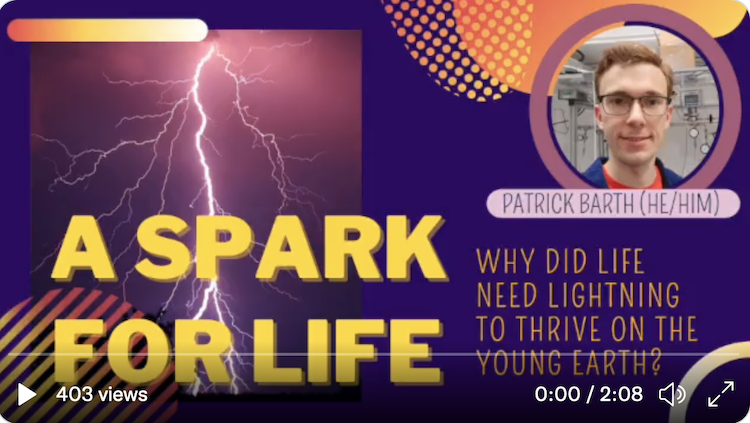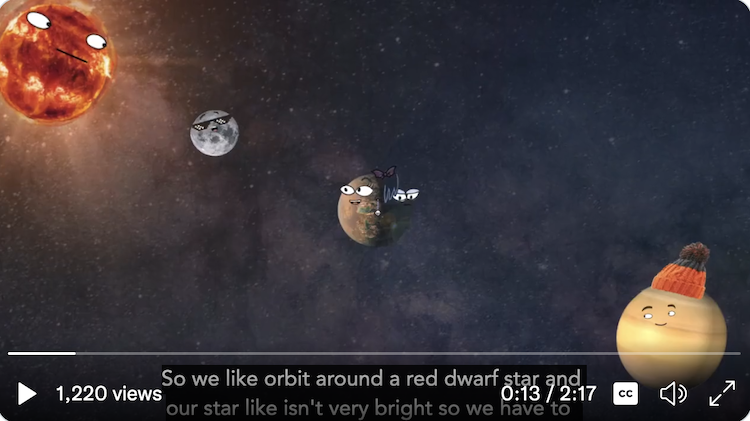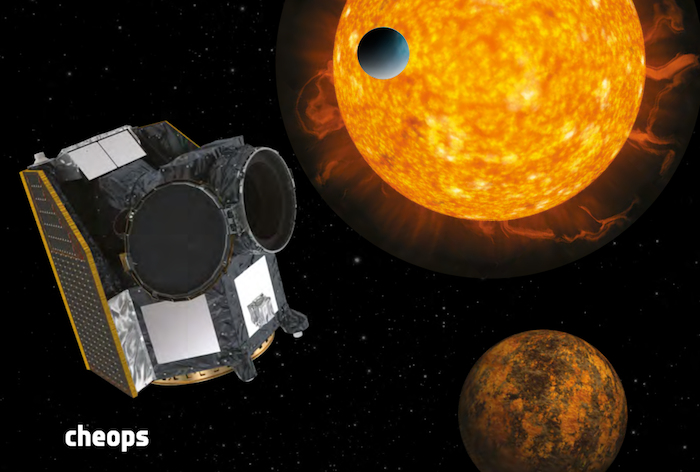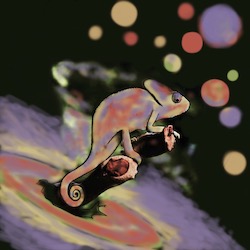St Andrews Centre for Exoplanet Science
Rationale
Understanding how unusual Earth is may help humanity to appreciate how special it is.
More than 5000 planets are known to orbit stars far beyond the solar system, in planetary systems very different to our own (Source: Exoplanet.eu). There may well be hundreds of billions of extrasolar planets in the Milky Way alone. These planets include planetary types not found among the eight planets that orbit our Sun, including mini-Neptunes, super-Earths, rogue or nomad planets and hot gas-giant planets. Are we therefore alone in the Universe? To answer this pertinent question, we seek to understand the formation and evolution of our own solar system and the reasons for this rich planetary diversity.
The Centre for Exoplanet Science brings together researchers from different disciplines to find out how planets form in different galactic environments, how their atmospheres evolve, and the relation between the evolutionary history of planets and the emergence of life. We are further interested in the moral, ethical and technical aspects of detecting existent or extinct extra-terrestrial life in distant exosystems, or within our own solar system, and the significance of such a discovery for our societies.
The Centre for Exoplanet Science builds on the rich legacy of the SUPA Astrobiology initiative.
The Centre for Exoplanet Science currently combines research from the School of Physics and Astronomy (Astronomy), the School of Earth and Environmental Sciences, the Department of Philosophy, the School of Biology, the Department of Social Anthropology and the School of Modern Languages (Russian) at the University of St Andrews.
Multilingual Science Fiction Project
Funded by Entrepreneurial Education Funding at the University of St Andrews
This project brings together student translators, exoplanet scientists, and creative practitioners to work with fictional texts about exoplanets from a range of cultures and languages. The diversity and multilingualism of these texts reflect different space imaginaries and storytelling practices about extraterrestrial worlds.
Science Discovery Day 2022
Two of our PhD students have produced videos for the recent Science Discovery Day.
Patrick Barth made a video about the role lightning played for life on the young Earth – “A spark for life”. |
Emma Puranen talks about tidally locked planets. |
CHEOPS Mission Update
 Following its launch in mid-December 2019 and subsequent orbital manoeuvers, the Swiss-led ESA exoplanetary transit-photometry space mission CHEOPS has undertaken an extensive commissioning phase. The spacecraft recently passed its in-orbit commissioning review. Throughout its lifetime so far St Andrews’s and StA-CES’s very own Tom Wilson has conducted the lion’s share of the data analysis that led to validation of the mission’s prime science performance requirements and paved the way from commissioning to imminent science observations!
Following its launch in mid-December 2019 and subsequent orbital manoeuvers, the Swiss-led ESA exoplanetary transit-photometry space mission CHEOPS has undertaken an extensive commissioning phase. The spacecraft recently passed its in-orbit commissioning review. Throughout its lifetime so far St Andrews’s and StA-CES’s very own Tom Wilson has conducted the lion’s share of the data analysis that led to validation of the mission’s prime science performance requirements and paved the way from commissioning to imminent science observations!
Press release: First results from Cheops: ESA’s exoplanet observer reveals extreme alien world (Sep 2020)
Article: The hot dayside and asymmetric transit of WASP-189 b seen by CHEOPS (Nov 2020)
Press release: New planets found in unique system with CHEOPS (Jan 2021)
Article: Six transiting planets and a chain of Laplace resonances in TOI-178 (Jan 2021)
Press release: Rare planet found in space telescope photobomb (Jun 2021)
Article: Transit detection of the long-period volatile-rich super-Earth Nu2 Lupi d with CHEOPS (Jun 2021)
CHAMELEON – Marie Curie Innovative Training Network
Virtual Laboratories for Exoplanets and Planet-Forming Disks
 Retrieving (from data), predicting (from detailed models) and thereby understanding the link between the chemical composition of planet-forming disks and exoplanet atmospheres is a challenging task. In the CHAMELEON Marie Curie Innovative Training Network (MC-ITN), we focus on the development of Virtual Laboratories which will be the crucial tool to analyse in detail current and future disk and exoplanet observations.
Retrieving (from data), predicting (from detailed models) and thereby understanding the link between the chemical composition of planet-forming disks and exoplanet atmospheres is a challenging task. In the CHAMELEON Marie Curie Innovative Training Network (MC-ITN), we focus on the development of Virtual Laboratories which will be the crucial tool to analyse in detail current and future disk and exoplanet observations.
Virtual laboratories play a key role in simulating yet unexplored physico-chemical environments to answer the questions whether our Solar System is unique and how life emerged.
In these Virtual Laboratories, we combine existing, well-tested theoretical modelling tools of varying complexity to explore their combined strength, limits, and the need for new techniques. Virtual Laboratories use advanced numerical and statistical methods that comprise input from astrophysics, computational chemistry, laboratory and theoretical physics, geosciences, mathematics, and computer sciences.
Art and Science
- Mineral Snowflakes – An audiovisual piece created by Sonia Killmann in collaboration with Dominic Samra, representing the formation of clouds on a Jupiter-like exoplanet through sound. This piece was produced for ‘Intersections‘, a concert of new music created in collaboration between researchers at the University of St Andrews and composers at The Royal Conservatoire of Scotland, and The Laidlaw Music Centre as part of Explorathon 2020, Scotland’s component of European Researchers’ Night.
- Marc Horemans is a Belgian artist who also leads the Multidisciplinary Studio Projectatelier of SLAC, Academy of Fine Arts Leuven, Belgium.
The collaboration of Projectatelier with KU Leuven (Belgium) resulted in the 2017 exhibition “PiLoT#1“.
Within the studio, and in collaboration with CHAMELEON, a new platform ‘Ex(p)oplanet‘ has been set up, aiming to bridge art and science.
Projectatelier invites the scientists and PhD students from CHAMELEON to interact on how to develop concepts in Art and STEAM (Science, Technology, Engineering, Art and Mathematics). The primary question is: “How can art and science meet, strengthen and challenge each other, and lead to new insights?”

From l-r: Hilde Ghesquiere: Atmosphere 1 (Photograph), Christiane Aerts: Study for Day & Night on a Exoplanet (Drawing), Elisabeth Vanhoutte: Surface (Plaster).

From l-r: Kelly Willems: Still Points (Drawing), Mien Van Kerckhoven: Object (Projection).
